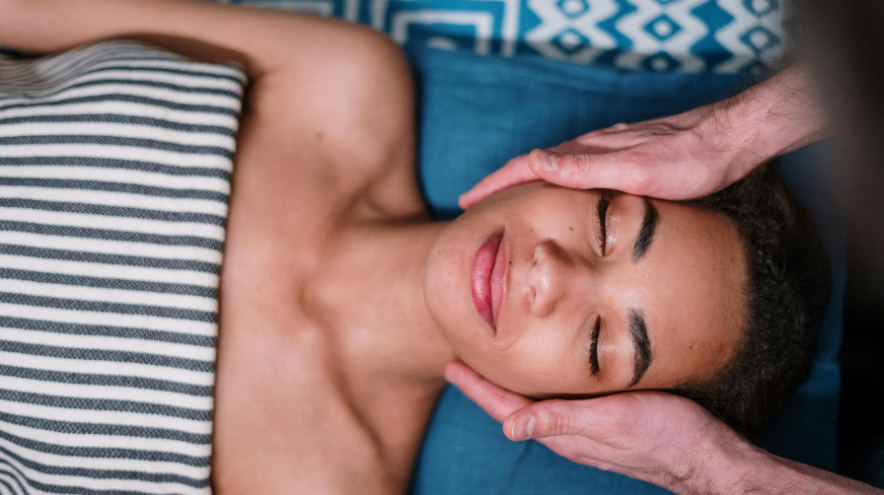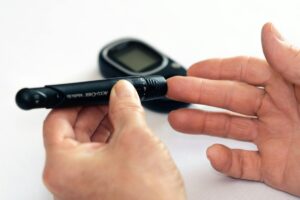Blue Light Therapy: Benefits for Skin and Mood

I’ve observed how innovative therapies are reshaping approaches to wellness and skincare, offering alternatives that merge science with accessibility. Among these, blue light therapy has gained significant attention for its dual potential in improving skin health and enhancing emotional wellbeing.
This treatment matters because it connects two essential aspects of modern life: appearance and mental balance. Dermatologists and wellness specialists increasingly recommend blue light therapy as a non-invasive solution for acne and as a mood-regulating practice. By understanding its applications, you can make informed choices about integrating this therapy into your daily routine.
affiliate link
Key Takeaways
Blue light therapy supports skin health by targeting acne-causing bacteria.
Controlled exposure to blue light can positively influence mood and energy.
Understanding benefits and risks helps you use blue light therapy safely.
Blue Light Therapy for Skin Health and Acne Treatment
Blue light therapy is widely recognized in dermatology for its effectiveness in treating acne. It works by targeting Propionibacterium acnes, the bacteria that contribute to breakouts. When exposed to specific wavelengths, the bacteria’s metabolic processes are disrupted, reducing inflammation and preventing further spread [placeholder citation].
Clinical studies have shown that consistent use of blue light therapy can decrease acne lesions without the side effects commonly associated with topical or oral medications. In addition to acne, research suggests blue light may accelerate wound healing and reduce localized skin inflammation.
You may encounter blue light therapy in dermatologist-led sessions or through consumer devices like masks and handheld units. While professional treatments often provide faster results, at-home devices offer convenience for ongoing care, particularly when integrated into a broader skincare regimen.
Blue Light Therapy for Mood and Mental Wellness
Beyond skincare, blue light therapy is increasingly used to regulate mood and energy levels. Its most common application lies in treating Seasonal Affective Disorder (SAD), a type of depression linked to reduced daylight exposure. By mimicking aspects of natural sunlight, blue light helps stabilize circadian rhythms and elevate serotonin production.
Comparisons with natural sunlight reveal that therapy lamps provide a controlled and consistent level of light exposure, reducing the unpredictability of outdoor conditions. However, counterarguments exist. Overexposure to blue light can overstimulate the brain, disrupt sleep, or strain the eyes. Critics also raise concerns about psychological dependency if the therapy becomes a sole coping mechanism.
Balanced perspectives suggest that when used responsibly, blue light therapy offers psychological benefits without replacing other mental health interventions. For best results, it should complement—not substitute—professional treatment plans.

affiliate link
Real-World Applications of Blue Light Therapy Devices
Blue light therapy has moved beyond clinical settings, entering homes, offices, and wellness spaces. Dermatology clinics regularly employ professional-grade devices for acne management, while mental health practices integrate light therapy lamps for mood regulation.
Consumer-friendly devices have made the therapy accessible. You can now find masks designed for facial treatments, handheld wands targeting specific skin areas, and desk lamps providing blue light exposure for mood support. Many of these devices emphasize portability, affordability, and intuitive design, making them easy to incorporate into daily routines.
Future applications may extend into workplace wellness programs. Employers are exploring light therapy installations to improve employee focus, reduce fatigue, and combat the negative effects of prolonged indoor environments. This trend underscores the growing acceptance of light-based wellness strategies.
Benefits and Risks of Blue Light Therapy at Home
At-home blue light devices provide you with flexibility, but they also come with responsibilities. The benefits include improved skin clarity, enhanced mood stability, and the convenience of scheduling sessions at your own pace. When used properly, these devices can replicate many of the effects offered in clinical environments.
However, risks emerge if guidelines are ignored. Prolonged exposure without eye protection may lead to eye strain or discomfort. Exceeding recommended session durations can result in overstimulation, interfering with sleep patterns. Additionally, not all devices on the market meet safety standards, making it important to select FDA-approved products.
To integrate therapy into your daily routine safely, follow manufacturer instructions carefully. Limit exposure times, protect your eyes with shields when necessary, and avoid unregulated devices that lack clinical validation. Responsible use maximizes benefits while minimizing potential harm.
affiliate link
Future Trends in Blue Light Therapy for Skin and Mood
The future of blue light therapy looks promising as research and technology evolve. Scientists are exploring advanced wavelength targeting to enhance efficacy against acne and other skin conditions while minimizing risks. This precision approach may lead to personalized treatments tailored to individual skin profiles.
In skincare, developers are integrating blue light technology into AI-powered apps that recommend customized treatment schedules. These innovations provide data-driven guidance for users, improving both consistency and safety. In mental wellness, blue light therapy is expected to gain broader clinical acceptance for regulating sleep and supporting treatment of mood disorders.
On a larger scale, the wellness technology industry is positioning light therapy as a cornerstone of holistic health. From consumer devices to corporate wellness programs, blue light therapy will likely play an increasing role in bridging science, technology, and everyday wellbeing.
https://www.ncbi.nlm.nih.gov/
Conclusion
Blue light therapy holds considerable promise for addressing both dermatological and psychological needs. It reduces acne-causing bacteria, supports wound healing, and offers non-invasive alternatives to traditional treatments. At the same time, its influence on mood regulation demonstrates its versatility across healthcare disciplines.
When you embrace evidence-based therapies, you empower yourself to enhance both appearance and wellbeing. Blue light therapy exemplifies how technology can serve as a tool for balance—supporting not only how you look but also how you feel. By using it safely and wisely, you can maximize its benefits and invest in long-term health.
https://holisticwellnesswave.com/index.php/2025/06/26/sleep-better-top-tips-to-stay-cool-at-night/
FAQs
Q1: Is blue light therapy safe for daily use?
Yes, when used as directed. Limit sessions to recommended durations and protect your eyes with proper shielding.
Q2: Can blue light therapy replace traditional acne treatments?
No, it works best as a complementary approach. Dermatologists may combine it with topical or oral treatments [placeholder citation].
Q3: How long does it take to see results from blue light therapy?
For acne, visible improvement may occur after several weeks. For mood, benefits may appear within consistent daily use over two weeks.




